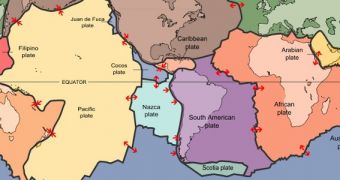Scientists at the University of California in Los Angeles (UCLA) recently conducted a new study on the intricate inner workings of the Pacific tectonic plate, one of the 12 large plates on Earth. Their research revealed a number of new aspects related to the formation's inner workings and anatomy, and it may in the future contribute to a better understanding of plate dynamics and interactions.
Plate interactions are the main driving force behind the formation of mountains, including the Himalayas, volcanoes, and earthquakes. Understanding how and why they move, drift, and collide has been a longstanding goal in geosciences. The new research contributes an extensive database of new knowledge to this international effort.
The investigation was led by UCLA College of Letters and Science assistant professor of Earth, planetary, and space sciences Caroline Beghein. Details of the work were published in the February 27 online issue of the top journal Science. The research was conducted using a technique called seismic tomography (ST), the group explains.
Using ST allowed the team to finally establish the thickness of the plate, as well as imagine its interior for the first time. In addition, the researchers were also able to gain new data on the nature and traits of the mantle that lies directly underneath it. The mantle connects Earth's crust to its outer core.
Beghein says that, even though the study brought a lot of new data, the fundamental properties of tectonic plates continue to remain enigmatic. In all likelihood, multiple similar investigations will have to be conducted over the next few years, both on the Pacific plate and all other major plates on Earth.
“Rocks deform and flow slowly inside the Earth's mantle, which makes the plates move at the surface. Our research enables us to image the interior of the plate and helps us figure out how it formed and evolved,” adds the expert, who was the lead author of the Science paper.
ST works similarly to computed tomography (CT) scans, which are used in hospitals to image the human body. The main difference is that it does not use X-rays, but rather the seismic waves generated by earthquakes. The method can track how these waves travel and get reflected through the ground, revealing the nature and composition of the material underneath the crust.
“By modeling the behavior of seismic waves in Earth's mantle, we discovered a transition inside the plate from the top, where the rocks didn't deform or flow very much, to the bottom of the plate, where they are more strongly deformed by tectonic forces,” Beghein explains.
“This transition corresponds to a boundary between the layers that we can image with seismology and that we attribute to changes in rock composition,” the investigator concludes.

 14 DAY TRIAL //
14 DAY TRIAL //